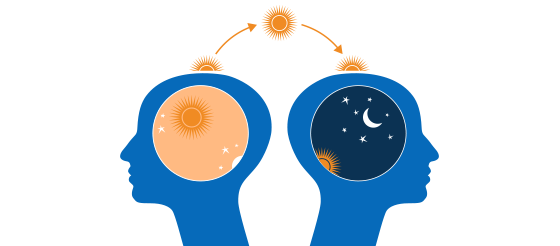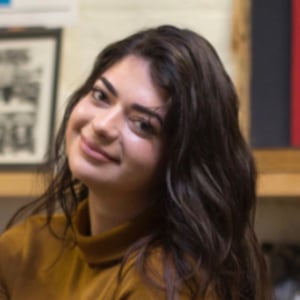The DSM-5 categorizes insomnia disorder as a sleep-wake disorder where the individual experiences symptoms such as:
- Dissatisfaction with sleep quality
- Distress or impairment in occupational, educational, behavioral, and social areas of functioning
- Sleep difficulties occur despite opportunity for sleep
- Sleep difficulties occur at least three nights a week
- Sleep difficulties present for at least three months
- Sleep difficulties are not better explained by another sleep-wake disorder, coexisting disorder, or substance use
What is Cognitive Behavioral Therapy for Insomnia (CBT-I)?
Cognitive Behavioral Therapy (CBT) is an effective therapeutic treatment for various mental disorders and is most commonly associated with anxiety and depressive disorders. Cognitive Behavioral Therapy for Insomnia (CBT-I) explicitly targets the demographic of individuals who face difficulties with falling asleep and maintaining their sleep. CBT-I is an alternative to pharmacological approaches to insomnia.
Cognitive Behavioral Treatment for Insomnia by Perlis, Junquist, Smith, and Posner defines specific treatments associated with CBT-I, such as stimulus control, sleep restriction, sleep hygiene, relaxation training, and cognitive restructuring. These methods attempt to target psychological and behavioral patterns to improve sleep.
Therapy treatment typically lasts between four to eight weeks ranging from thirty to ninety minutes in session length. After the healthcare provider determines a baseline for their client’s sleep schedule within the first few weeks, they may select the appropriate treatment method for the remaining sessions.
Dr. Aric Prather, Ph.D., is a clinical psychologist and researcher who treats insomnia disorder with CBT-I at the University of California, San Francisco, and the author of The Sleep Prescription: Seven Days to Unlocking Your Best Rest. He describes sleep as “more than the things we do before bed– it begins the moment we wake up, being kind to ourselves, managing our stress, scheduling time for worries, alternatives to caffeine.”
Insomnia affects a wide range of individuals and is often diagnosed in conjunction with additional mental or physical illness. Dr. Prather reveals insomnia is often comorbid with psychological and neurological diseases such as the following:
- Parkinson’s Disease
- Multiple Sclerosis
- Traumatic Brain Injuries (TBIs)
- Long COVID
How Does CBT-I Work?
CBT-I integrates behavioral and cognitive interventions to target the roots of a sleep disorder. Insomnia treatment typically incorporates three or more components of CBT-I. For example, initial sleep restriction and cognitive restructuring contribute to the improved use of sleep hygiene habits. The goal is to prompt individuals with insomnia to reframe their inability to maintain or fall asleep as a normalized part of the treatment process rather than a distressing act.
The American Academy of Sleep Medicine recommends a multicomponent cognitive behavioral therapy approach that combines various treatments. Stimulus control therapy, sleep restriction therapy, and sleep hygiene classify as single-component methods.
Stimulus Control Therapy (SCT)
Stimulus Control Therapy (SCT) is one of the first recommendations for individuals undergoing CBT-I therapy. SCT limits distracting stimuli in an attempt to promote a desirable sleep environment for individuals with insomnia.
The bedroom traditionally served few purposes, one of which was primarily to rest. A bedroom frequently doubles as an office, personal gym, and living room for individuals in the modern world. When individuals associate their bed with external stimuli such as completing work assignments or watching a stressful news segment, the quality of their sleep is at risk for complications.
According to Cognitive Behavioral Treatment for Insomnia, the following points outline the main principles of SCT:
- Only attempt to sleep when tired
- Strictly utilize the bed for sleep and sexual activity
- Leave the bedroom if sleep difficulties occur for 15 or more minutes
- Return to bed only when sleepy
Bootzin, Epstein, and Wood from the University of Arizona wrote a chapter on Stimulus Control Instructions which reveals the aim of stimulus control therapy as “strengthening the bed as a cue for sleep” and “weakening it as a cue for activities that might interfere with sleep.”
Sleep Restriction Therapy (SRT)
Sleep Restriction Therapy (SRT) is considered a conditional treatment style, which proves an effective treatment on its own or in cooperation with CBT-I.
SRT is a method of restriction to limit an individual’s time in bed (TIB) to an amount equivalent to their total sleep time (TST). This method initially restricts an individual’s ability to spend time in bed, hoping the correction leads to higher sleep quality.
For example, if a client’s initial baseline and sleep time are at 11 PM with a waketime of 10 AM, then the SRT bedtime becomes 2 AM and is brought up incrementally by fifteen minutes each week. Daytime fatigue and restlessness are possible side effects during the beginning phases. This therapy treatment is not recommended for individuals working high-risk jobs, such as operating heavy machinery, nor individuals predisposed to mania or seizures.
Dr. Aric Prather utilizes this method to increase homeostatic sleep drive, the biological feeling of needing to sleep as the day progresses. He ensures sleep deprivation does not reach below five hours with his patients.
Sleep Hygience
Sleep hygiene refers to the habits that maintain healthy resting patterns. The American Academy of Sleep Medicine advises against the use of sleep hygiene as a single-component treatment, whereas SCT and SRT are conditionally recommended as single-component treatments. Sleep hygiene is more effective when incorporated with other treatment styles, especially cognitive behavioral therapy for insomnia.
The following list references sleep hygiene habits:
- Wake and sleep at the same time to create consistency within the circadian rhythm
- Sleep only as much as it takes you to feel refreshed
- Exercise regularly
- Reduce external noise
- Ensure the bedroom is a comfortable temperature
- Limit alcohol and caffeine intake
- Avoid naps or forcing yourself to sleep when not tired
Cognitive Restructuring
Cognitive restructuring is a form of cognitive behavioral therapy which explicitly targets the process behind maladaptive cognitions and beliefs. The client’s goal throughout treatment is to evaluate these cognitive processes critically. Individuals with insomnia often believe their lack of sleep or inability to fall asleep is exceptionally damaging. These maladaptive beliefs lead to a cycle of excessive stress and worry, which impedes their sleep quality.
A therapist must recognize the sensitivity and importance of uncovering long-held negative beliefs about poor sleep. Catastrophic thoughts, for instance, include assumptions that tiredness will lead to a mistake at work with devastating consequences such as causing a harmful accident or getting fired. Cognitive restructuring is effective when in conjunction with alternative CBT-I treatments.
Relaxation Training
Relaxation training is valuable in individuals with somatic complaints and emphasizes physiological relaxation.
Relaxation training includes:
- Progressive muscle relaxation: Muscle relaxation focuses on reducing muscular tension within the body.
- Abdominal and diaphragmatic breathing: Diaphragmatic breathing emphasizes slower, deeper breaths to encourage calmness which is similar to the breaths taken while asleep.
- Autogenic training: Autogenic training is a method in which clients envision blood flow to their extremities with the intention of visualizing warmth spreading throughout the body.
- Imagery training: Imagery training aims to incorporate pleasant sensory images to encourage bedtime relaxation.
This treatment is beneficial for individuals with insomnia whose sleep difficulties encompass chronic pain, physical illness, or medical complications. Relaxation training is recommended as a conditional, single-component therapy or in combination with other CBT-I treatments.
Is CBT-I Effective?
Sleep research divides insomnia treatment into categories, whether they are effective as an independent treatment or as part of a multicomponent treatment method. The conditionally recommended interventions show promise as a single-component treatment, yet they are more effective when combined with CBT-I, a strongly recommended intervention.
The American Academy of Sleep Medicine highlights CBT-I as the most recommended multicomponent treatment, which incorporates cognitive reframing and education about behavioral habits like sleep hygiene.
Strongly Recommended Intervention:
- CBT-I
Conditionally Recommended Interventions:
- Stimulus Control Therapy (SCT)
- Sleep Restriction Therapy (SRT)
- Sleep Hygiene Education
- Relaxation Therapy
Professional Resources
In partnership with CONCEPT, Dr. Jerrod Brown, PhD, leads a program on the Behavioral Health Aspects of Insomnia to further explain the intricacies of insomnia disorder and its connection to mood, behavior, physical health, and criminality.
Additionally, Dr. Aric Prather, who conducts behavioral health research in the psychiatry department of UCSF, reveals his top tips to keep insomnia under control:
- Wake up consistently at the same time seven days a week. Establish a standard wake time to contribute to a stable circadian rhythm.
- Don’t spend tons of time in bed if you can’t fall asleep.
- Don’t drink caffeine after lunchtime.
- Keep the bedroom dark, quiet, and cool.
- Look into science-back treatments.























